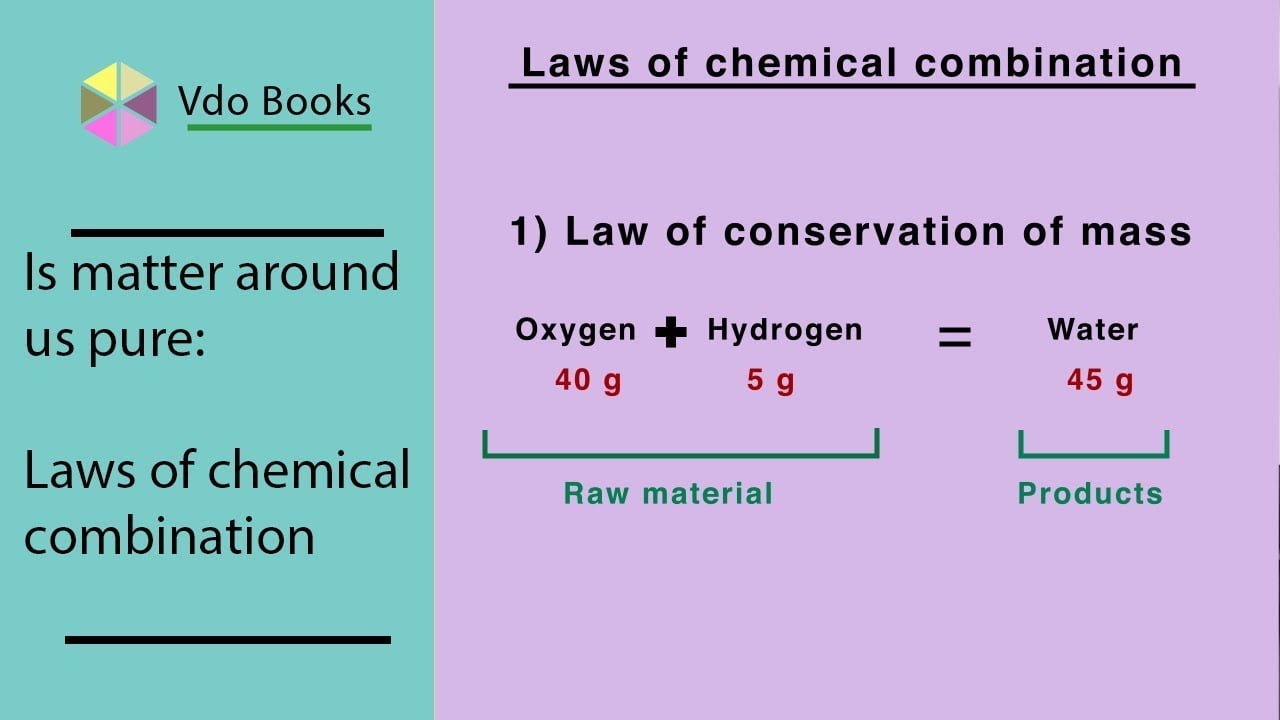Law of Chemical Combination
Einstein derived an expression to the inter conservation of matter and energy given by E= mc2, where c is the velocity of light, E is energy and M is the mass.
The theory has now been put in the form of a law called the law of conservation of mass or law or law of indestructibility of matter
Law of conservation of mass state that matter can neither be created nor destroyed in the course of any chemical reaction.
Nkedugist, are trying to help students build their self-confidence for those ones who are willing to be better than their teachers. nkedugists might not be the major top website that you know but what we can assure you is that all solution provided here is always corrects.
Experiment To Verify The Law Of Conservation Of Mass
Reagents: Silver trioxonitrate (v) solution and potassium chloride solution and potassium chloride solution
Method
Put some potassium chloride solution in a conical flask. Fill a small test tube with trioxonitrate (v) solution and by means of a string, let the test tube be suspended in the conical flask, cover the flask with a stopper and weigh.
The lift the conical flask and shake to allow to mix together. After mixing, a white precipitate of silver chloride is formed and a colourless solution of potassium trioxonitrate (v).
The Law of Definite Proportion or Constant Composition
The Law of Definite Proportion or Constant Composition state that all pure samples of the same chemical compound contain the same elements combined in the same proportion by mass.
Another name for Definite proportion is constant composition.
The Law of Multiple Proportion
Dalton’s fourth Theory is that chemical combinations take place between small whole number ratio atoms.
The law of multiple proportion state that if two element A and B are combined together to form more than one compound, the several masses of A which is separately combined with a fix masses of B are in the same sample ratio.

Law of Chemical Combination
Some given solution to some test questions
1. What is the amount (in mole) of sodium trioxocarbonate (iv) in 5.3g of the compound? ( Na2Co3 = 106g)
A.0.05 Answer
B. 010
C. 0.20
D. 0.50
Solution
Mole = Reacting Mass/molar mass
Mole = 5.3/106 = 0.05mole
2. In two separate experiments, 0.36 and 0.71g of chlorine combined with a metal X to give Y and Z respectively. An analysis showed that Y and Z contain 0.20g and 0.40g of respectively. The data above represents the law of
A. Multiple proportion Answer
B. conservation of mass
C. constant proportion
D. reciprocal proportion
3. Calculate the percentage composition of water of crystalization in the compound below? Sodium trioxocarbonate (iv) decahydrate i.e Na2CO3.10H20
A. 62.94% Answer
B. 88.43%
C. 55.67%
D. 70.16%
Solution
Compound Na2CO3.10H20
2 x 23 + 1 x 12 + 3 x 16 + [20 x 1 + 10 x 16]
46 + 12 + 48 + 20 + 160 = 286g
[20 x 1 + 10 x 16] water of crystallization is 180
Then 180/286 x 100 = 62.94%
Try this and solve
6g of metal M reacts completely with 23.66g of chlorine to form 29.66g of the metallic chloride.find the emperical formula of the metallic chloride. ( M=27, Cl=35.5)
Recommended Link:
Please if you have a question you want us to help you out with we advise you to drop it in our comment box and we promise to help you out within 24hours.







Thank you for the good writeup. It in fact was a amusement account it. Look advanced to far added agreeable from you! By the way, how could we communicate?